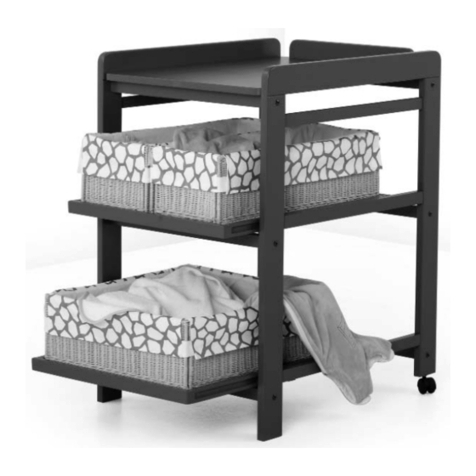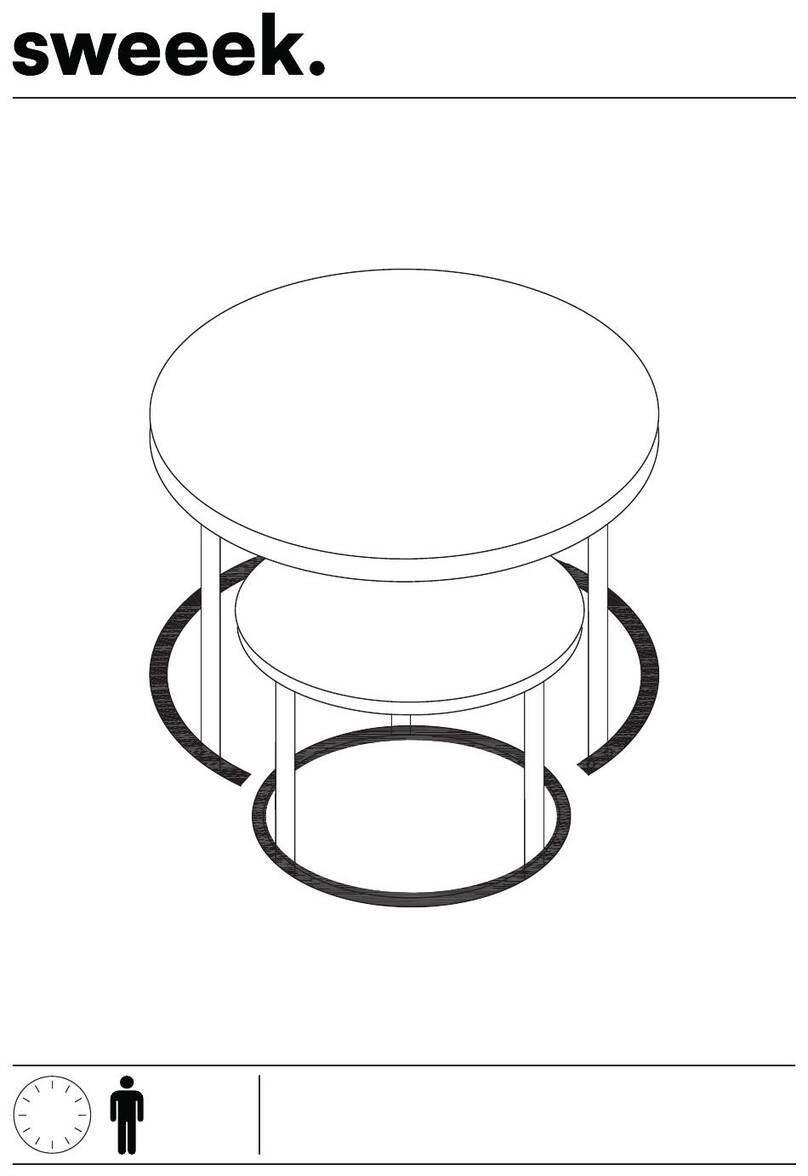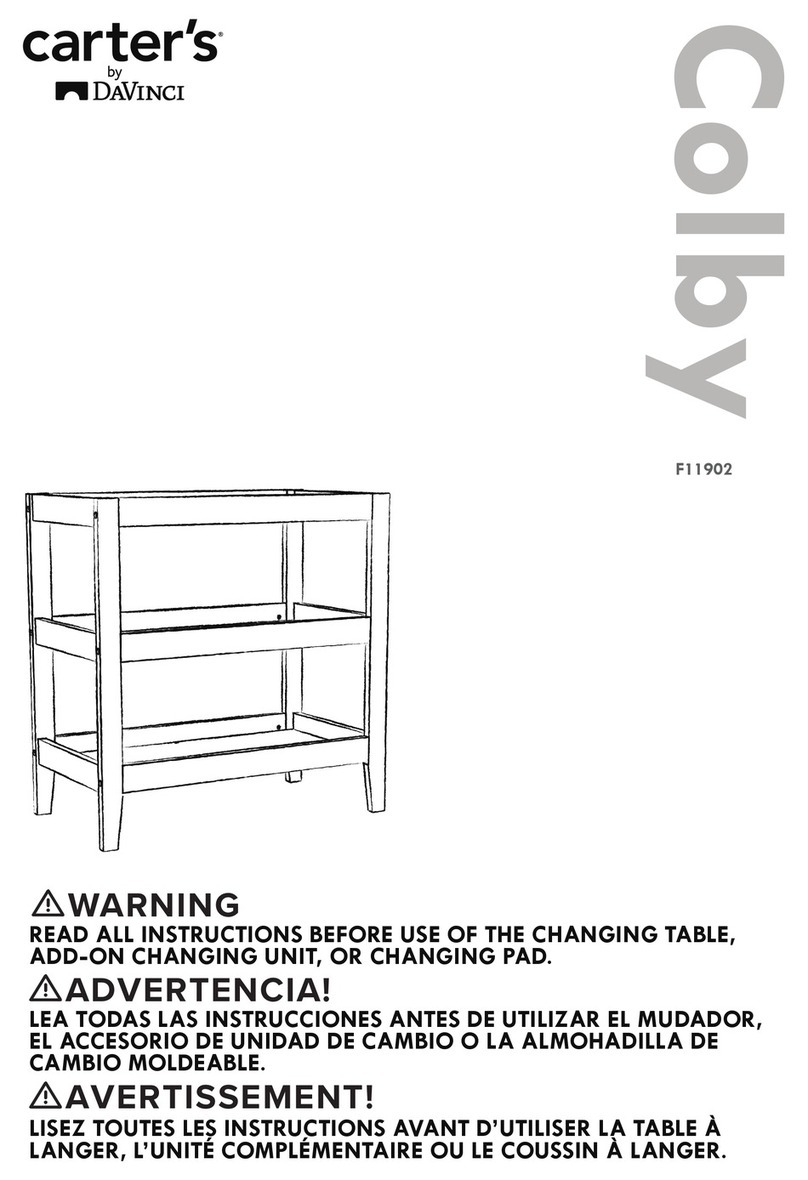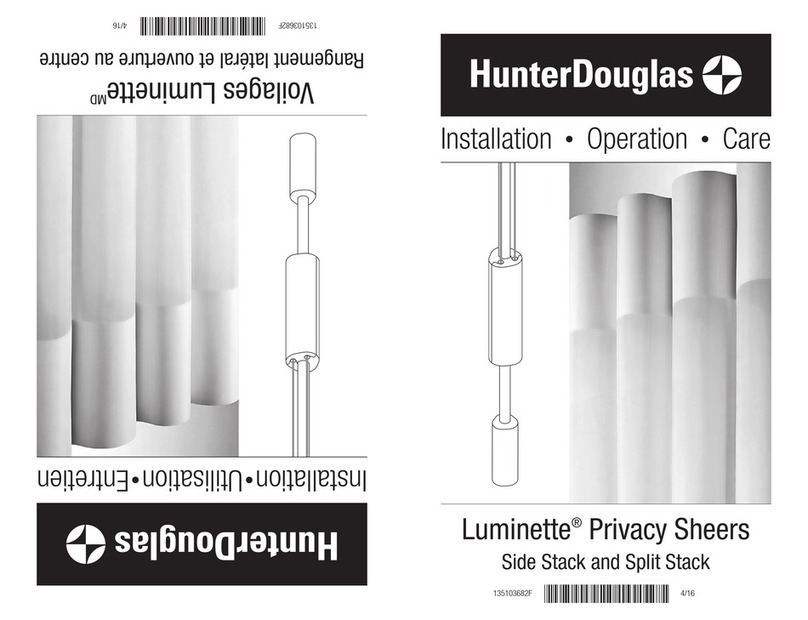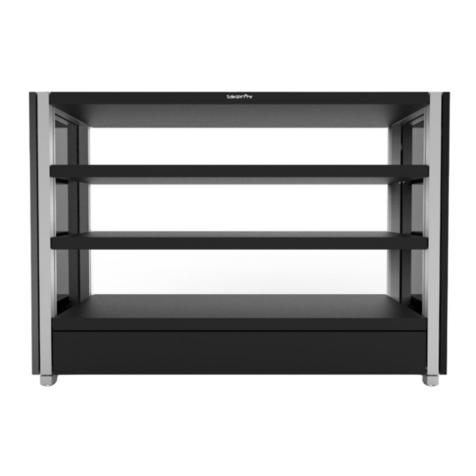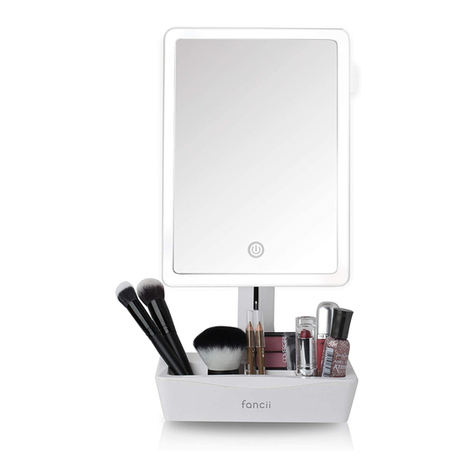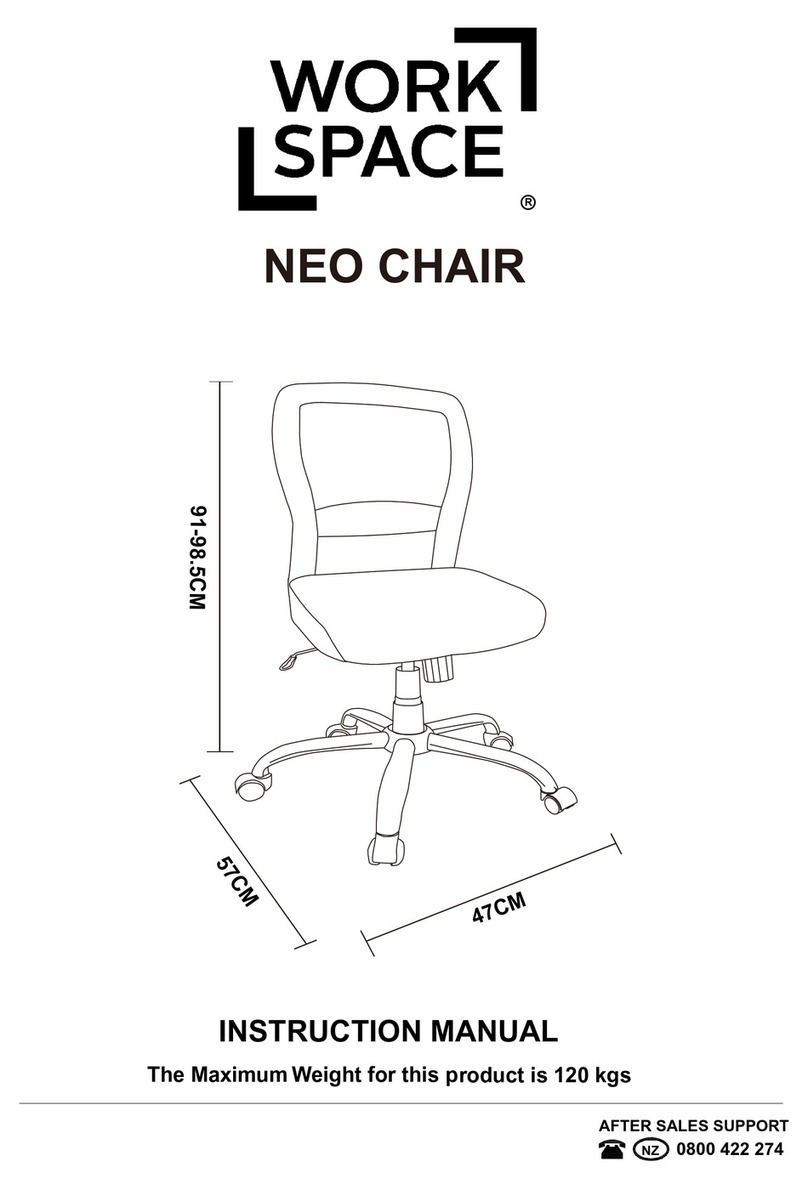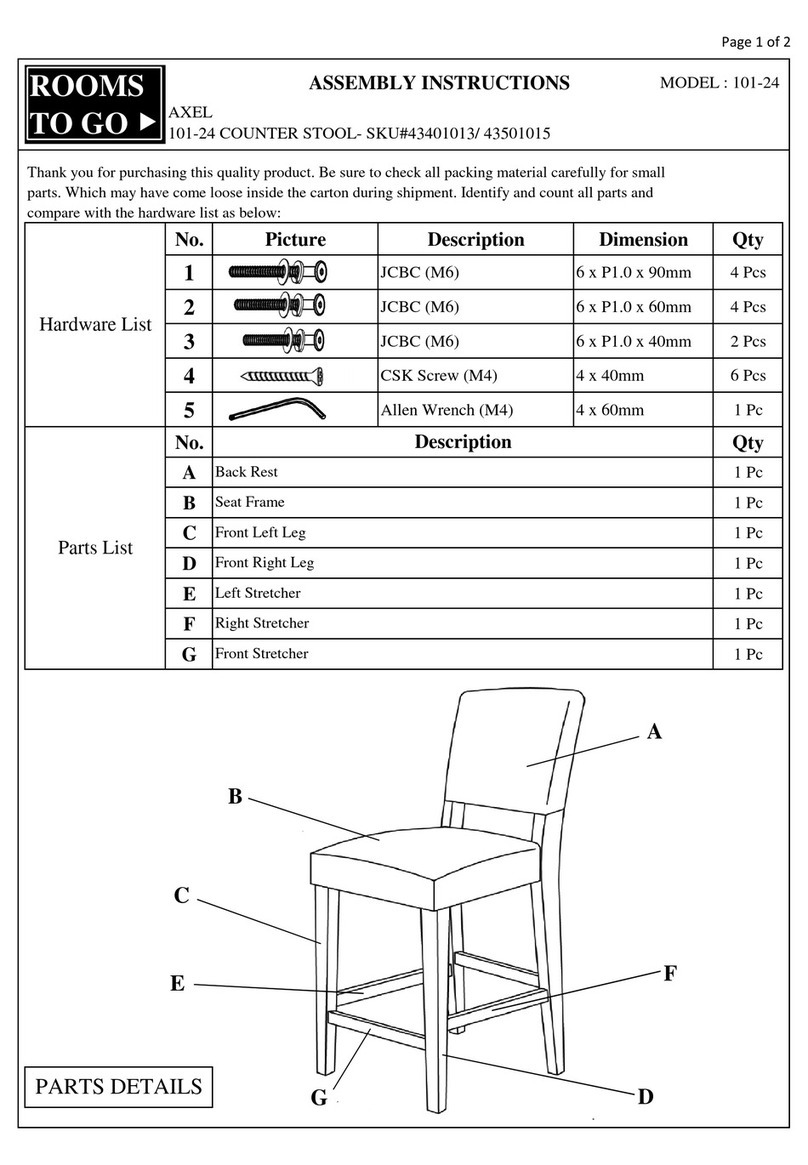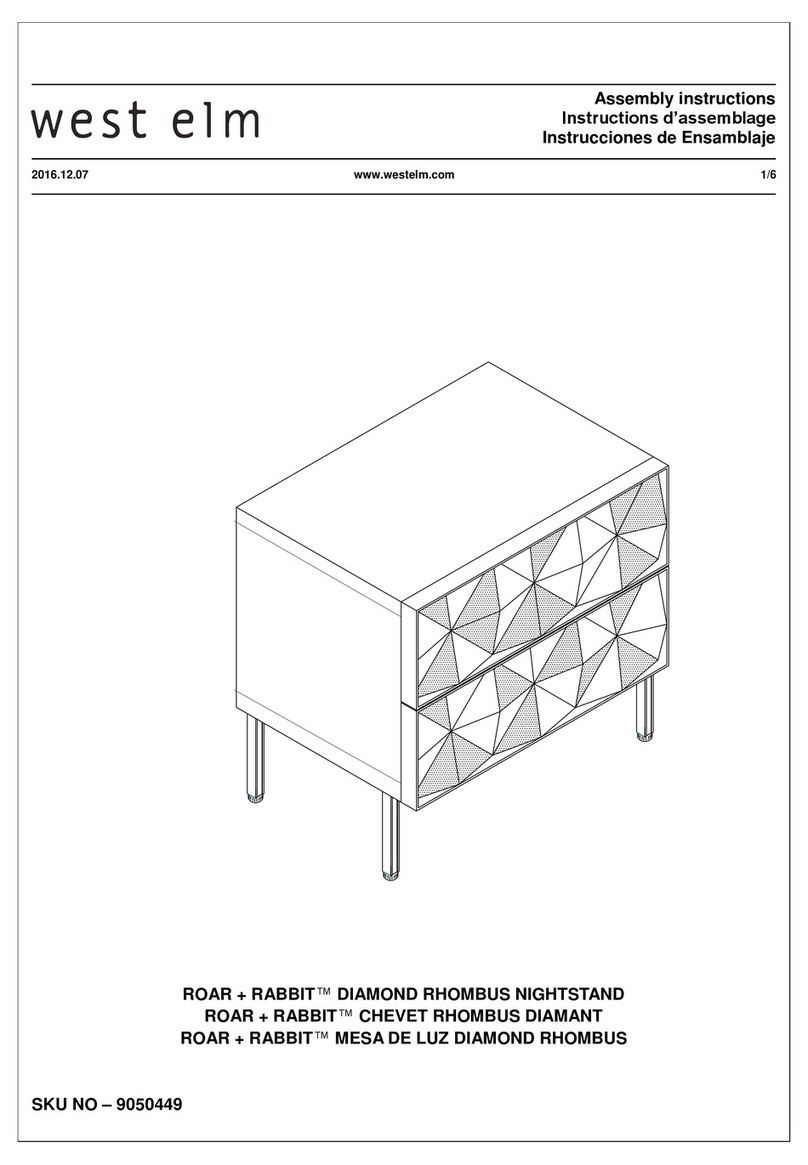Hardie Groove Lining User manual

We value your feedback!
To continue with the development of our products and systems, we value your
input. Please send any suggestions, including your name, contact details, and
relevant sketches to:
Ask James Hardie™
literaturefeedback@jameshardie.co.nz
Make sure your information is up to date
When specifying or installing Hardie™fibre cement products, ensure that you have
the current manual. Additional installation information, warranties and warnings
are available at www.jameshardie.co.nz or Ask James Hardie™ on 0800 808 868.
2 Hardie™ Groove Lining Installation Manual | July 2021 New Zealand

Contents
1 Introduction 4
2 Safe Working Practices 7
2.1 Storage and Delivery 9
2.2 Tips for Safe and Easy Handling of
Hardie™Groove Lining 10
3 Framing 10
3.1 General 10
3.2 Timber 10
3.3 Steel 11
3.4 Preparation 11
4 Installation 12
4.1 Sheet Layout 12
4.2 Fasteners 12
4.3 Fixing To Walls 13
4.4 Full Sheet Fixing 15
4.5 Dado Height Fixing 17
4.6 Fixing Over Plasterboard Lining 19
4.7 Fixing To Ceilings and Sots 19
4.8 Fixing To Masonry Substrates 20
5 Jointing and Corners 21
5.1 Butt Joints 21
5.2 Corners 23
6 Product Information 26
6.1 General 26
6.2 Product Mass 26
6.3 Durability 26
6.4 Fire Properties 26
6.5 Finishes 26
6.6 Maintenance 26
Product Warranty 27
Hardie™ Groove Lining Installation Manual | July 2021 New Zealand 3

1 Introduction
Hardie™Groove Lining combines the appearance of traditional timber tongue and groove wall panelling with the
benefits of modern fibre cement.
Because the baseboard is Hardie™fibre cement, it’s resistant to fire, rot resistant and resistant to moisture damage
when installed and maintained as directed.
Hardie™Groove Lining has decorative v-shaped grooves carved into the front face of the 7.5mm sheet, and is
sanded, ready to be painted in any colour.
Hardie™ Groove Lining can be fixed to the full height of the wall or at dado height to create a decorative, hard-
wearing, impact resistant lining in hallways and to withstand the toughest treatment in family rooms, rumpus
rooms, laundries and bathrooms (not suitable for shower areas).
Hardie™Groove Lining is also ideal for use in ceilings, either to add interest to a modern design, or to create
historical detail on a renovation project.
The main features of Hardie™Groove Lining are:
• Durable internal lining, sot and ceiling sheet.
• Creates suitable surface for paint finish.
• Sheet edges have a ‘half groove’ to achieve concealed sheet joints.
• Reliable impact resistant decorative lining. Ideal for wall lining where walls are prone to damage.
• Resistance to damage from moisture making it ideal for bathrooms, laundries and kitchens.
• Joints won’t pull or shift apart.
• Authentic v-shaped grooves replicate traditional tongue and groove look and style.
• Ideal as feature wall to dado height.
The specifier or other responsible party for the project must ensure the information and details in this guide are
appropriate for the intended application and specific design and detailing is undertaken for areas which fall
outside the scope of this documentation.
Make sure your information is up to date
When specifying or installing Hardie™fibre cement products, ensure you have the current manual. If you’re
not sure you do, or if you need more information, visit www.jameshardie.co.nz or Ask James Hardie™on
0800 808 868.
Hardie™Groove Lining is only for use in internal applications.
For use externally on eaves and sots refer to the Eaves and Sots Installation Manual by James Hardie.
James Hardie conducts stringent quality checks to ensure that any product manufactured falls within our quality
spectrum. It is the responsibility of the builder to ensure that the product meets their aesthetic expectations before
installation. James Hardie will not be responsible for rectifying obvious aesthetic surface variations following
installation. James Hardie will only oer a replacement product if Hardie™Groove Lining supplied are found to be
out of its manufacturing specification.
4 Hardie™ Groove Lining Installation Manual | July 2021 New Zealand

Table 1
Product Description Description
5mm
100mm
Half groove edge
2.5
mm
Hardie™Groove Lining is a
v-grooved internal lining board
with the look of timber and the
durability of fibre cement.
Individual batten widths are
100mm
Sheet sizes:
2400mm x 1200mm x 7.5mm
Product code 400246
2700mm x 1200mm x 7.5mm
Product code 400245
Note: All dimensions and masses provided are approximate only and are subject to manufacturing tolerances.
Table 2
Product/Accessories/Tools supplied by James Hardie
Product Description Code Product Description Code
Hardie™Blade Saw
Blade 184mm diameter,
poly diamond blade,
for fast, clean cutting of
Hardie™fibre cement.
300660 FibreTEKS®Screw
For fastening to 0.75mm
to 1.0mm BMT steel
frames.
Class 3 finish. Length:
30mm x 9g
® denotes a registered
mark of Buildex®
1000/box
303840
Hardie™Base Coat
For finishing fastener
heads.
Volume: 4kg Pail
15kg Bag
304490
304491
Hardie™Drive Screw
s/s 316
30mm x 7g
100/jar
300928
Sot Scotia Mould 2
pcs.
(base and cap)
2400mm
300916 Villadrive™Wood Screw
Envirodrab coating.
Length: 30mm x 6g
100/jar
300992
5kg/box
300993
1000
collated
300994
Hardie™Knife
Scoring tool for easy
cutting.
305926
Hardie™ Groove Lining Installation Manual | July 2021 New Zealand 5

Table 3
Product/Accessories/Tools not supplied by James Hardie
James Hardie recommends the following products for use in conjunction with its Hardie™Groove Lining. James
Hardie does not supply these products and does not provide a warranty for their use. Please contact the
component manufacturer for information on their warranties and further information on their products.
Hardie™Flex nails
40 x 2.8mm galvanised or stainless
steel 316 fibre cement nails for
fastening to timber.
Fibreshear
Electric cutting tool.
Adhesive Sealant
Sika®Sikaflex®11FC, Bostik®Seal N
Flex-1, Fuller™Max Bond™, Selleys®
Liquid Nails
Brad Nail
ND 50
To be used in conjuction with 6mm
bead of adhesive on a stud/nogs.
Only suitable for internal walls.
6 Hardie™ Groove Lining Installation Manual | July 2021 New Zealand

2 Safe Working Practices
WARNING - DO NOT BREATHE DUST AND CUT ONLY IN WELL VENTILATED AREA
Hardie™fibre cement products contain sand, a source of respirable crystalline silica. May cause cancer if
dust from product is inhaled. Causes damage to lungs and respiratory system through prolonged or repeated
inhalation of dust from product.
Intact fibre cement products are not expected to result in any adverse toxic eects. The hazard associated with
fibre cement arises from the respirable crystalline silica present in dust generated by activities such as cutting,
rebating, drilling, routing, sawing, crushing, or otherwise abrading fibre cement, and when cleaning up, disposing
of or moving dust.
When doing any of these activities in a manner that generates dust, follow James Hardie’s instructions and best
practices to reduce or limit the release of dust.
If using a dust mask or respirator, use an AS/NZS 1716 P1 filter and refer to Australian/New Zealand Standard
1715:2009 Selection, Use and Maintenance of Respiratory Protective Equipment for more extensive guidance and
more options for selecting respirators for workplaces. For further information, refer to our installation instructions
and Safety Data Sheets available at www.jameshardie.co.nz.
FAILURE TO ADHERE TO OUR WARNINGS, SAFETY DATA SHEETS, AND INSTALLATION INSTRUCTIONS MAY LEAD
TO SERIOUS PERSONAL INJURY OR DEATH.
Crystalline Silica is
• Commonly known as sand or quartz
• Found in many building products e.g. concrete, bricks, grout, wallboard, ceramic tiles, and all fibre cement
materials
Why is Crystalline Silica a health hazard?
• Silica can be breathed deep into the lungs when present in the air as a very fine (respirable) dust
• Exposure to silica dust without taking the appropriate safety measures to minimise the amount being breathed
in, can lead to a potentially fatal lung disease – silicosis – and has also been linked with other diseases including
cancer. Some studies suggest that smoking may increase these risks
• The most hazardous dust is the dust you cannot see!
When is Crystalline Silica a health hazard?
• It’s dangerous to health if safety protocols to control dust are not followed when cutting, drilling or rebating a
product containing crystalline silica
• Products containing silica are harmless if intact (e.g. an un-cut sheet of wall board)
Hardie™ Groove Lining Installation Manual | July 2021 New Zealand 7

Avoid breathing in crystalline silica dust
Safe working practices
NEVER use a power saw indoors or in a poorly ventilated area
NEVER dry sweep
ALWAYS use M Class or higher vacuum or damp down dust before sweeping up
NEVER use grinders
ALWAYS use a dust reducing circular saw equipped with a sawblade specifically designed to minimise dust
creation when cutting fibre cement – preferably a sawblade that carries the Hardie™Blade name or one with
at least equivalent performance – connected to an M Class or higher vacuum
Before cutting warn others in the area to avoid dust
ALWAYS follow tool manufacturers’ safety recommendations
ALWAYS expose only the minimum required depth of blade for the thickness of fibre cement to be cut
ALWAYS wear a properly-fitted, approved dust mask or respirator P1 or higher in accordance with applicable
government regulations and manufacturer instructions
Consider rotating personnel across cutting tasks to further limit respirable silica exposures.
Use one of the following for cutting:
Best
• Hardie™Knife
• Hand guillotine
• Fibreshear
Better
Dust reducing circular saw equipped with Hardie™Blade Saw Blade and connected to a M Class or higher
vacuum.
When cutting outdoors
Make sure you work in a well ventilated area
Position cutting station so wind will blow dust away from yourself and others in the working area
Cut products with either a Hardie™ Knife or fibre cement shears or, when not feasible, a Hardie™ Blade Saw
Blade (or equivalent) and a dust reducing circular saw connected to a M Class or higher vacuum
When sawing, sanding, rebating, drilling or machining fibre cement products, always:
- Wear your P1 or higher mask (correctly fitted in accordance with manufacturers’ instructions), ask others to
do the same.
- Keep persons on site at least 2 metres and as far as practicable away from the cutting station while the saw
is in operation
- If you are not clean shaven, then use a powered air respirator with a loose-fitting head top
- Wear safety glasses
- Wear hearing protection
- When others are close by, ask them to do the same
Make sure you clean up BUT never dry sweep. Always hose down with water/wet wipe or use an M Class or
higher vacuum
8 Hardie™ Groove Lining Installation Manual | July 2021 New Zealand

When cutting indoors
Never cut using a circular saw indoors
Position cutting station in a well ventilated area
Cut ONLY using a Hardie™Knife, hand guillotine or fibreshears
(manual, electric or pneumatic)
Make sure you clean up BUT never dry sweep. Always hose
down with water/wet wipe or use an M Class or higher
vacuum
Working instructions
Hardie™Blade Saw Blade
The Hardie™Blade Saw Blade used with a dust-reducing saw is
ideal for fast, clean cutting of Hardie™fibre cement products. A
dust-reducing saw uses a dust collector connected to a M Class or
higher vacuum. When sawing, clamp a straight edge to the sheet
as a guide and run the saw base plate along the straight edge
when making the cut.
Hole forming
For smooth clean cut circular holes:
• Mark the centre of the hole on the sheet
• Pre-drill a ‘pilot’ hole
• Using the pilot hole as a guide, cut the hole to the appropriate diameter with a hole saw fitted to a heavy duty
electric drill
For irregular holes:
• Small rectangular or circular holes can be cut by drilling a series of small holes around the perimeter of the hole
then tapping out the waste piece from the sheet face
• Tap carefully to avoid damage to sheets, ensuring that the sheet edges are properly supported
2.1 Storage and delivery
Keeping products and people safe
O loading
Hardie™fibre cement products should be o-loaded carefully by hand or by forklift
Hardie™fibre cement products should not be rolled or dumped o a truck during the delivery to the jobsite
Storage
Hardie™fibre cement products should be stored:
In their original packaging
Hardie™ Groove Lining Installation Manual | July 2021 New Zealand 9

Under cover where possible or otherwise protected with a waterproof covering to keep products dry
O the ground – either on a pallet or adequately supported on timber or other spacers
Flat so as to minimise bending
Hardie™fibre cement products must not be stored:
Directly on the ground
In the open air exposed to the elements
James Hardie is not responsible for damage due to improper storage and handling.
2.2 Tips for Safe and Easy Handling of Hardie™Groove Lining
Carry with two people
Hold near each end and on edge
Exercise care when handling sheet products to avoid damaging the edges/corners
3 Framing
3.1 General
Hardie™Groove Lining can be fixed to either timber or light gauge domestic type steel framing. The framing used
must comply with the relevant building regulations and standards and the requirements of this manual.
Note: Hardie™Groove Lining must not be used in shower areas.
3.2 Timber
Timber framing must comply with the durability requirements of Clause ‘B2’ of the NZBC. Timber must be treated
as per the requirements of the NZS 3602.
Timber framing sizes and set out must satisfy the minimum requirements of NZS 3604 and this installation guide.
The minimum stud width of 35mm may be used. However, where butt jointing is used the minimum stud width is
45mm at the joint. See Figure 13.
Reference NZS 3604 ‘Timber-framed Buildings’.
10 Hardie™ Groove Lining Installation Manual | July 2021 New Zealand

3.3 Steel
The minimum size for steel stud framing should be 64mm deep x 0.55mm base metal thickness (BMT). Steel
framing shall comply with NASH 3405 Steel Framed Buildings. Steel sections shall be galvanised or zinc coated of
0.55mm — 1.6mm BMT. Studs must not be less than 38mm wide at butt joints.
Figure 1: Frame straightness
3.4 Preparation
Ensure frame is square and work from a central datum line. Frames must be straight and true to provide a flush
face to receive the sheeting.
A suggested maximum tolerance of between 3mm and 4mm in any 3000mm length of frame will give best
results. Hardie™Groove Lining will not straighten excessively warped or distorted frames and any warping may
still be visible after the internal lining is installed.
Hardie™ Groove Lining Installation Manual | July 2021 New Zealand 11

4 Installation
4.1 Sheet Layout
Hardie™Groove Lining is usually fixed vertically. Sheet joints must coincide with the centre line of the framing
member.
The long edges of the sheet have a unique half groove, which achieves a concealed joint.
Where fixing half height sheets as a dado wall, provide a row of noggings to allow for fastening of the sheet edge.
When fixing around window openings, best practice would be to align the sheet joints with the window jamb.
4.2 Fasteners
Fasteners must have the appropriate level of durability required for the intended project.
Fasteners must be fully compatible with all other material that they are in contact with to ensure the durability and
integrity of the assembly.
• On timber frame use Villadrive™screws 30mm x 6g or Hardie™Drive stainless steel screws for quick installation
of Hardie™Groove Lining.
• Alternatively the Hardie™Groove Lining can be fixed with 40 x 2.8mm Hardie™Flex nails or ND 50 brad nails.
• For fixing Hardie™Groove Lining to 0.55 – 1.0mm BMT steel framing, use 30mm Buildex®FibreTEKS collated
screws.
Nails must be finished flush (Figure 2). Screws can be driven 0.5mm below the sheet surface to achieve the
required finish level (Figure 2). In steel framing the fasteners should be driven as close as possible to the stud
corners to avoid deflection of the stud flange, see Figure 3.
Drive screw 0.5mm
below sheet surface
Flush nailing
HardieFlex nail
and Brad nail
Unacceptable:
under driven
Unacceptable:
over driven
Figure 2: Fastener depth
12 Hardie™ Groove Lining Installation Manual | July 2021 New Zealand

STEP 1
Fix sheet to the
open side of flange
STEP 2
Fix the next sheet to
the web side of the stud
NOTE:
By installing
the sheets in this
sequence a flush
outside surface is
maintained.
Figure 3: Screw fastening
Note: Do not place nails or screws within 100mm of the adhesive daubs.
4.3 Fixing to Walls
Step 1
Place 6.0mm o-cut packers along floor as temporary support for sheets.
This allows provision for frame movement. Put sheet in place as shown.
Step 2
Fix sheet starting from the centre of sheet and working outwards to avoid any druminess. For fastener spacings
refer to Figures 6 and 8 for full height and dado height walls respectively.
Final step
Fix remaining sheets in similar sequence.
Hardie™ Groove Lining Installation Manual | July 2021 New Zealand 13

Figure 4: Sheet installation
Figure 5: Sheet fixing
14 Hardie™ Groove Lining Installation Manual | July 2021 New Zealand

4.4 Full Sheet Fixing
When fixing full sheets of Hardie™Groove Lining to framed walls, fasten sheets as shown in Figure 6. Sheet butt
joints must coincide with the centre line of framing members.
50mm min.
at corners
gap
6mm
6mm gap
200mm
max.
600mm
max.
12mm min.
from edge
200mm
max.
HardieGroove Lining
300mm
max.
1200mm
min.
Figure 6: Full sheet fixing
Hardie™ Groove Lining Installation Manual | July 2021 New Zealand 15

Notes:
1. To reduce the number of visible fixings the centre of the sheet can be fixed with adhesive. See Figure 8 and 9 for details.
2. Hardie™Groove Lining can also be fixed using brad nails in conjunction with adhesives to reduce visible fixings.
Figure 7: Brad nail fixing
16 Hardie™ Groove Lining Installation Manual | July 2021 New Zealand

Villaboard™ Lining
4.5 Dado Height Fixing
Hardie™Groove Lining may be installed to half the wall height to create a dado appearance. Ensure top of sheet
is fixed to an in-line row of noggings as shown in Figure 8 and 9.
Figure 8: Dado height fixing with brads
Hardie™ Groove Lining Installation Manual | July 2021 New Zealand 17

Villaboard™ Lining
Figure 9: Dado height fixing with screws
18 Hardie™ Groove Lining Installation Manual | July 2021 New Zealand

4.6 Fixing Over Plasterboard Lining
Hardie™Groove Lining can be fixed over an existing plasterboard lining. The sheet must be fixed with minimum
50mm nail or a screw 40mm x 8g.
4.7 Fixing To Ceilings and Sots
For Fixing Hardie™Groove Lining to sot/ceiling, refer to Eaves and Sot Linings Installation Manual for further
detailed information.
In ceiling applications Hardie™Groove Lining can be fixed either parallel or perpendicular to framing. See Figure
10.
Figure 10: Along joists Across joists
50mm min.
at corners
12mm min.
from edge
200mm
max.
around
edges
250mm
max.
600mm
max centres.
600mm
max centres.
12mm min.
from edge
50mm min.
at corners
200mm
max.
around
edges
250mm
max.
Notes:
1. Fastener fixing method is shown, however, fastener/adhesive fixing method may also be used. See Figure 8 and 9.
2. In ceiling applications do not fix sheets to the bottom chord of roof trusses. Instead, fix to timber battens or metal furring
channels.
3. Do not use brad nails in ceiling/sot applications.
4. When butt jointing short ends of Hardie™Groove Lining in ceiling/sot applications, the short edges must be cut square
and have chamfer formed.
Hardie™ Groove Lining Installation Manual | July 2021 New Zealand 19

4.8 Fixing To Masonry Substrates
Hardie™Groove Lining can be installed over masonry substrates. Refer Figure 11.
Figure 11: Batten/furring channel
HardieGroove
Lining
600mm
max.
6m
6mm gap
m
gap
200mm
max.
50mm min.
from corners
12mm min.
from edge
Fastener
Masonry
200mm
max. centres
200mm
max.
1200mm max.
35mm thick x 45mm wide
timber batten/steel
furring channel fixed to
wall with suitable fasteners
or anchor clips.
20 Hardie™ Groove Lining Installation Manual | July 2021 New Zealand
Table of contents
Popular Indoor Furnishing manuals by other brands

Grizzly
Grizzly T28931 instructions

Unfinished Furniture of Wilmington
Unfinished Furniture of Wilmington T-4818XBT Assembly instructions

Furniture of America
Furniture of America YNJ-15413C5-TV Assembly instructions

DUSK
DUSK Ascot manual

Germania
Germania 1694 Assembly instruction

Möbel AS
Möbel AS KLTS62321 Assembling Instruction


